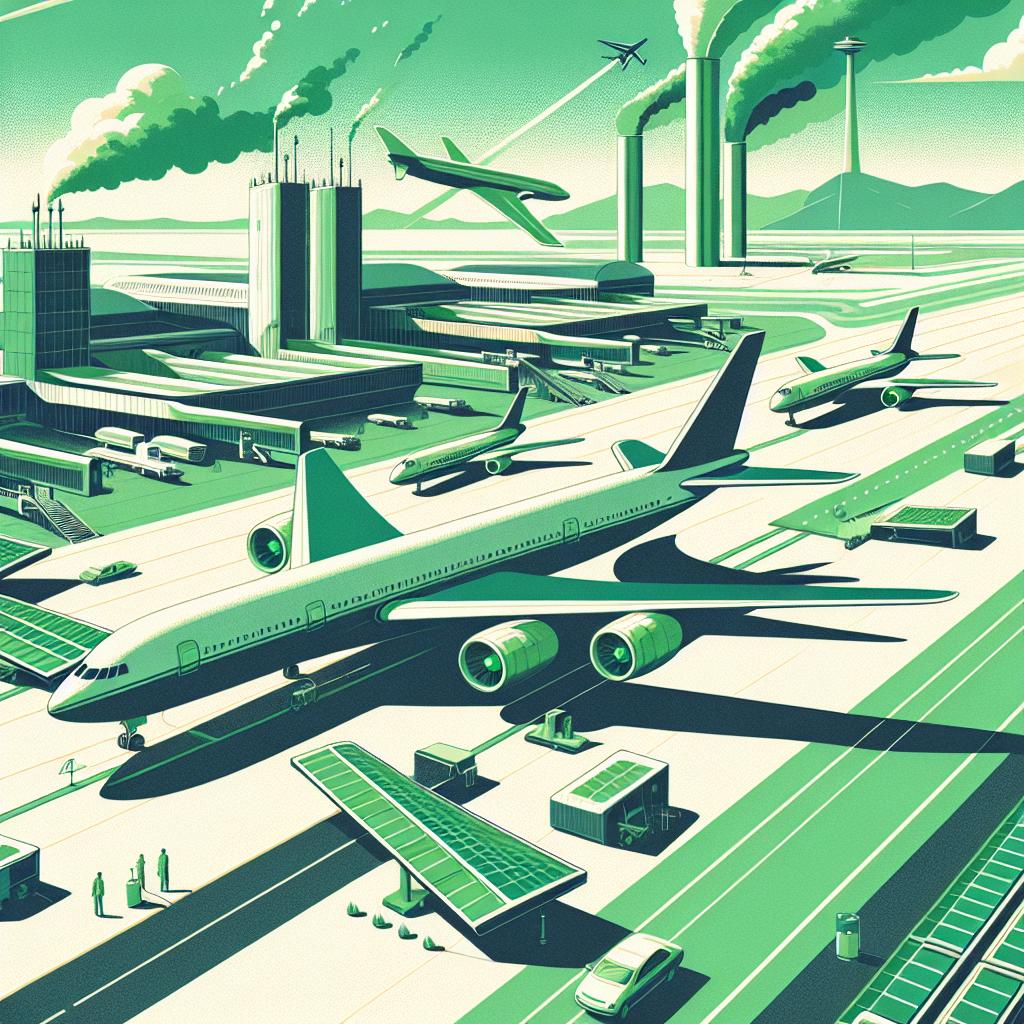The Carbon Footprint of Air Travel
Air travel is a major contributor to greenhouse gas emissions, accounting for approximately 2-3% of global carbon dioxide emissions. As international travel resumes post-pandemic, airlines face immense pressure to adopt sustainable practices and reduce their carbon footprint. Sustainable aviation seeks to chart a course toward greener skies, incorporating cleaner technologies and smarter flight operations to combat the challenges of climate change.
The Technologies Driving Sustainable Aviation
Achieving sustainable aviation requires an array of innovative solutions:
- Biofuels: One of the promising avenues is the development of biofuels derived from renewable resources. These fuels can significantly cut carbon emissions compared to traditional fossil fuels.
- Electric Aircraft: Advances in electric propulsion have brought the concept of electric aircraft closer to reality. Although still in the experimental phase, companies are exploring electric planes that may soon carry passengers.
- Efficient Flight Paths: Implementing more efficient flight paths can reduce fuel consumption. Technologies that leverage real-time data to optimize takeoff, cruising, and landing routes are vital.
Corporate Commitments and Targets
In response to mounting evidence of climate change, major airlines are making ambitious commitments to enhance sustainability. Several key players in the aviation industry target carbon neutrality by mid-century, indicating a societal shift toward greener practices. Some notable targets include:
“Major airlines are setting ambitious targets for carbon neutrality by mid-century.”
Airlines are investing in R&D for sustainable solutions, forging partnerships with tech firms and startups specializing in aviation innovation. One successful example is the collaboration between major airlines and biofuel producers to increase the use of sustainable fuels. Regional efforts, such as participating in the CORSIA (Carbon Offsetting and Reduction Scheme for International Aviation), highlight international cooperation in regulating emissions.
Regulatory bodies worldwide are starting to endorse the formation of these environmentally-conscious policies that prompt airlines to commit to greener practices. As international agreements like CORSIA gain traction, the momentum for sustainable aviation expands.
The Impact of the COVID-19 Pandemic
The COVID-19 pandemic highlighted the troubling impacts of the aviation sector on climate change, fueling a renewed urgency to implement sustainable practices. During the global halt in travel, air quality indices in urban areas showed marked improvements, proving that reduced air traffic could have quick positive effects on the environment.

The evident environmental recovery raised public consciousness around sustainable practices, inviting both consumers and airlines to rethink traditional air travel. Many professionals in the aviation space believe that maintaining a balance between safety and environmental responsibility could pave the way for an exciting transformation in air travel.
The Road Ahead for Sustainable Aviation
As we look to the future, the quest for sustainable aviation seems promising but also hazardous. The challenges remain extensive, and as innovations advance, we are left pondering if these are the profound, lasting changes we need or merely a temporary shift to appease public scrutiny.
The goal remains the same: sustainable aviation that brings us not just further travel across the globe, but does so at a fraction of our current carbon output.
“The COVID-19 pandemic has accelerated the urgency to address climate impacts.”
As greener technologies take flight, we collectively usher in an era of innovation and consideration toward climate action. Continuous engagement and collaboration across industries and governments will play a crucial role in steering aviation toward a sustainable future.



